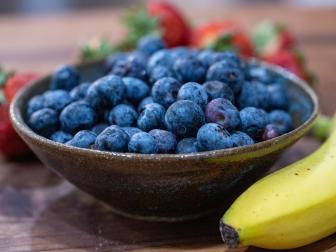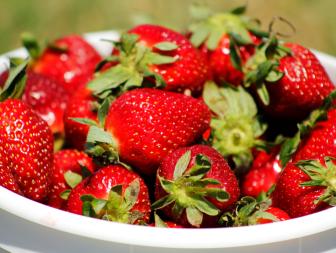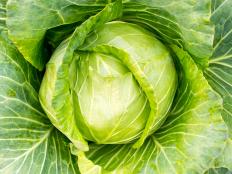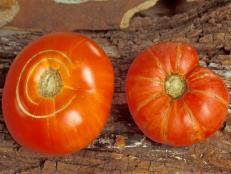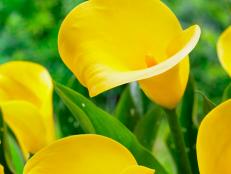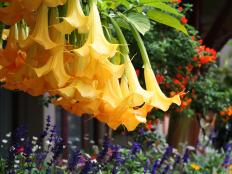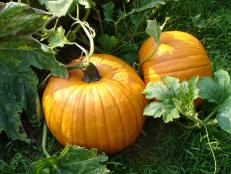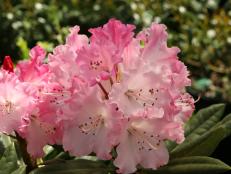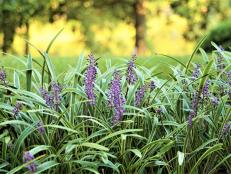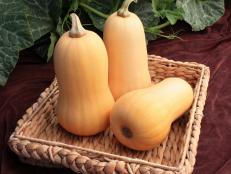How to Plant, Grow and Harvest Leeks
Leeks are one of the milder, sweeter members of Allium, the onion family. Read on to learn how to plant, grow, harvest and preserve leeks.

Leek (Allium porrum) is onion’s close cousin, though it doesn’t form a bulb, as onions do, and the edible portion looks more like a super-sized scallion or green onion. The white part of the leek, sometimes referred to as a “stem” is, technically, a tightly packed bundle of leaves.
They are a low-calorie, nutrient-dense food that studies show may have anti-inflammatory, anti-diabetic, and anticancer properties, along with other health benefits. They are rich in Vitamin K, which may help promote strong bones and are also a source of Vitamin C, Vitamin B6 and iron.
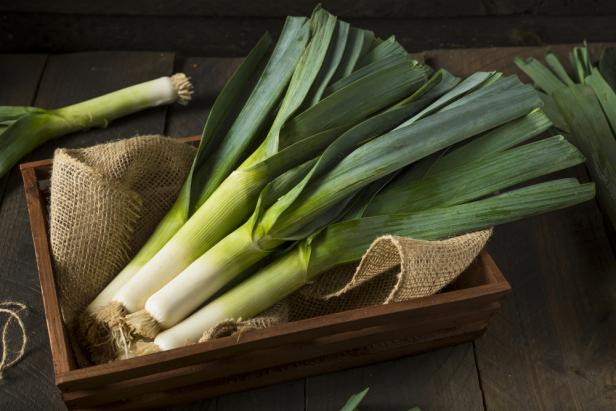
Shutterstock/Brent Hofacker
The white part of the leek, sometimes referred to as a “stem” is, technically, a tightly packed bundle of leaves. The bottom white and light green parts of the leek are the best parts to eat.
There are numerous varieties of leeks:
- Early-season ‘Rival’ and ‘King Richard’ matures in 75–80 days.
- ‘Dawn Giant’ and ‘Splendid’ mature in about 100 days.
- Late-season ‘Titan’ and ‘American Flag’ take 120-130 days to mature.
- There’s also an extra-late-season variety, ‘Giant Musselburgh,’ that has been grown for more than 90 years and is extremely hardy.
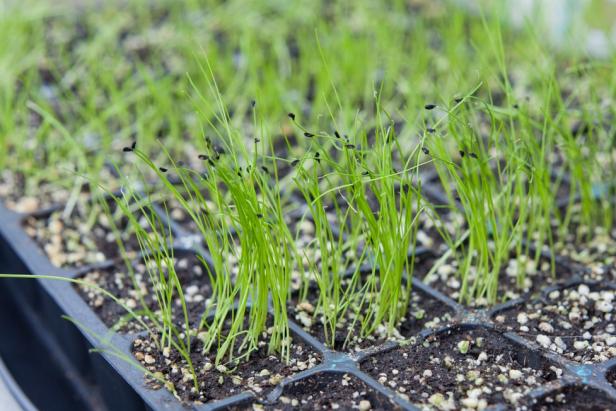
Shutterstock/JoannaTkaczuk
To grow seedlings, sow the small black seeds in moist potting mix eight to 10 weeks before the last frost date in your area. Seedlings are ready to set out when they are 8 inches tall.
How to Start Leeks From Seed
A little up-front planning goes a long way toward growing a successful crop of leeks. They are a cool-season vegetable that can be planted in early spring, and it’s best to start seeds indoors several weeks before the area’s first frost. You can also purchase already-sprouted seedlings from a garden center.
To start seeds indoors, sow the small black seeds in a sterile, moist seed-starting mix eight to 10 weeks before the last frost date in your area. Sow the seeds in individual cells about a quarter-inch deep or scatter them over a well-draining tray of potting mix and sprinkle another quarter-inch of potting mix over the seeds. Water the soil gently so the seeds are not displaced. Place the tray in a sunny window or under grow lights, and keep the soil moist. Leeks may take longer to sprout than you anticipate, possibly two to three weeks, so be patient.
While you wait, prepare the planting bed. To grow well, leeks require full sun — six to eight hours a day — and deep, well-drained, fertile soil. Compost added to a planting bed for leeks helps get them off to a good start.
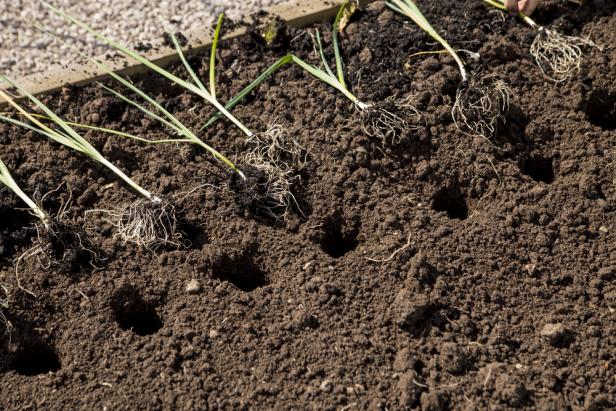
Shutterstock/James Copeland
Planting leeks seedlings into deep individual holes allows blanching to keep the stems white.
How to Transplant Leek Seedlings
Seedlings are ready to set out when they are about 8 inches tall, and you’ll want to plant them in a way that ensures a successful harvest later. The edible part of leeks is the white or light green stem, and the trick to getting that part a suitable length is to plant the seedlings in deep individual holes. In the prepared planting bed, use a garden knife, a hoe handle or a dibble — a tool used to poke holes in the soil — to make planting holes 6 to 8 inches deep and 4 to 6 inches apart. Separate the seedlings’ roots, and drop each seedling in the individual holes, leaving only the top few inches of leaves above the soil.
Add water to each hole; experienced gardeners say there’s no need to backfill with soil because the water you add to each hole will wash the soil over the roots. It’s the part of the plant that grows underground, out of the sun, that becomes the tasty white part of the leek.
Leeks can also be planted in a trench. Dig a trench about 6 inches deep and lay the individual seedlings with their roots at the bottom of the trench and water them in. As the seedlings grow, fill the trench with soil mounded up around the stems to block out light. This process, called blanching, results in the leeks growing a longer, tastier white stem.
How to Grow and Care for Leeks
Once they’re planted, leeks need about an inch of water a week to grow well. Keeping weeds to a minimum reduces competition for water, and a layer of mulch helps the soil retain moisture and reduces weed growth. Leeks benefit from a mid-summer side-dressing of nitrogen-rich fertilizer. Remove any dead leaves that could weaken the plants.
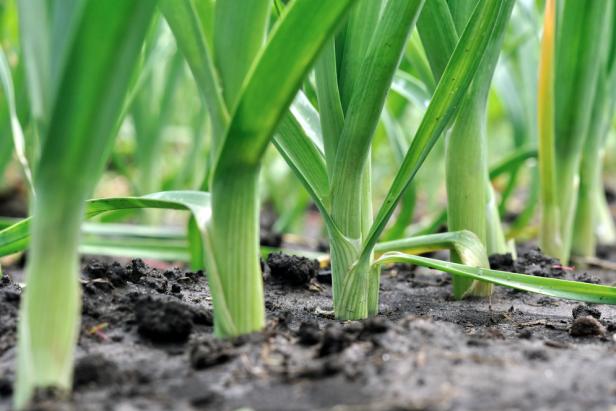
Shutterstock/yuris
Leeks require full sun — six to eight hours a day — and deep, well-drained, fertile soil.
Common Pests That Affect Leeks
Onion thrips and onion maggots are two pests that may affect leeks and other Alliums in the garden. Onion thrips are tiny insects that generally are found in the tight spaces between the leaves. They pierce the leaves and feed on the plant’s juices. Onion maggots feed on below-ground tissue of Allium-family plants. Good cultural practices — cleaning up garden debris, and providing good air circulation — can reduce the chances of these pests attacking your plants.
Companion Planting With Leeks
Leeks and other members of the Allium family deter several garden pests, including aphids and Japanese beetles, and repel cabbage loopers and other enemies of the brassicas in your garden (broccoli, Brussels sprouts, kale). They are also good companions in a garden with beets, carrots, lettuce, peppers and tomatoes.
A–Z Advice for Companion Planting in Your Vegetable Garden 16 Photos
Find detailed info and links for specific companion plants and planting techniques for popular vegetable garden crops in our alphabetical list, from beets to zucchini.
Don’t plant leeks or other alliums near asparagus, beans, peas or sage, as leeks can inhibit the growth of these veggies and herbs. It’s also wise to plant leeks away from other Alliums to avoid spreading diseases and pests that target these plants.
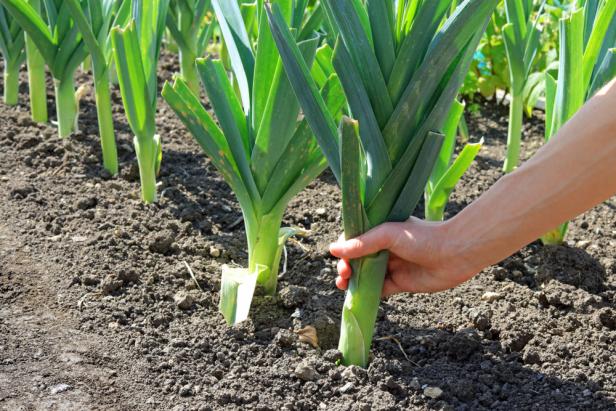
Shutterstock/Dean Clarke
Leeks are mature and ready to harvest when they are about an inch in diameter. Carefully loosen the soil around the plants, grasp the leek at the base close to the soil and pull it out.
When and How to Harvest Leeks
Leeks are mature and ready to harvest when they are about an inch in diameter, though they can be harvested sooner, or can stay in the ground until you are ready to use them.
Carefully loosen the soil around the plants, grasp the leaves close to the soil and pull the leeks out of the ground. Shake the soil from the roots, cut off the roots close to the bottom of the leek and strip off the outer layer to reveal the white stem. Cut off all but a few inches of the green tops. The tops are also edible, though somewhat tough, and can be chopped up and used to flavor soups and stocks. Fresh, uncut leeks can be stored in the refrigerator's crisper drawer for two to three weeks.
Leeks are cold hardy and can be left in the garden until they are ready to be harvested as needed.

Shutterstock/alicja neumiler
After harvest, shake the soil from the roots, cut the roots from the bottom of the stem, and strip off the outer layer to reveal the white stem.
How to Use and Preserve Leeks
Fresh leeks can be used in recipes that require a mild onion flavor and are good on their own, used raw to add a bit of onion-y crunch to salads. They are star players in classic recipes such as soul-warming potato-leek soup or the chilled version, vichyssoise.
It’s important to know that because of the way leeks grow underground, you will likely find bits of dirt and grit inside the tightly packed layers, so they need to be washed thoroughly before you toss sliced leeks into a salad or into the soup pot. An easy way to do this is to trim the bottom of the leek, make a vertical slice through the white portion, and fan out the layers under running water or rinse them in a bowl filled with water.
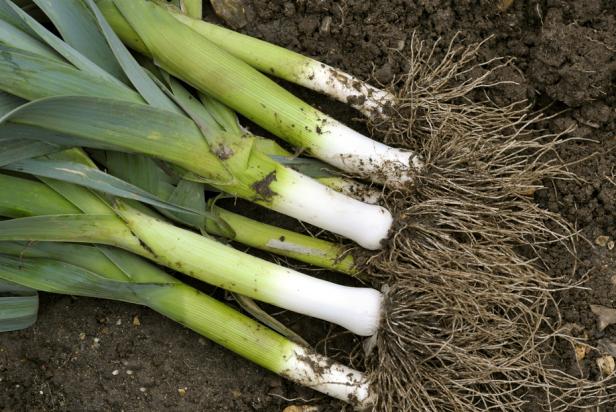
Shutterstock/Graham Corney
Freshly lifted leeks, allium ampeloprasum, in a vegetable garden are ready to wash, trim, and use in recipes. This variety is Musselburgh.
Leeks can also be chopped and frozen to be used later in cooked recipes. Wash them well to remove the grit, allow them to dry as much as possible, then chop them roughly and store them in freezer bags. Frozen leeks will lose their crunchiness so are best saved for soups and other cooked recipes, but they should last for several months in the freezer.
How to Freeze Fresh Produce 11 Photos
Enjoy the fresh flavors of your garden vegetables or farmer’s market fruits year-round by freezing them. Learn how with this easy step-by-step guide.
Can You Freeze It? 35 Photos
Find out how to freeze fruits and vegetables such as bananas, watermelon, apples and avocados as well as some surprising things you maybe didn't know you could freeze like eggs and milk.







